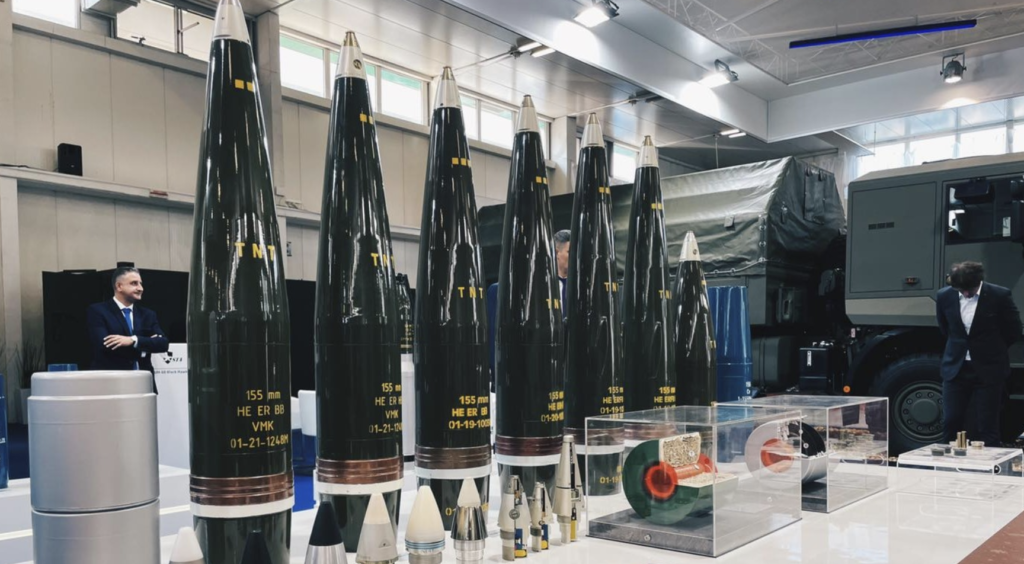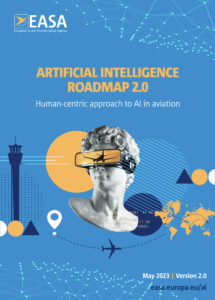| AI ACT: A STEP CLOSER TO THE FIRST RULES ON ARTIFICIAL INTELLIGENCE

- Once approved, they will be the world’s first rules on Artificial Intelligence
- MEPs include bans on biometric surveillance, emotion recognition, predictive policing AI systems
- Tailor-made regimes for general-purpose AI and foundation models like GPT
- The right to make complaints about AI systems
To ensure a human-centric and ethical development of Artificial Intelligence (AI) in Europe, MEPs endorsed new transparency and risk-management rules for AI systems.
The Internal Market Committee and the Civil Liberties Committee adopted a draft negotiating mandate on the first ever rules for Artificial Intelligence with 84 votes in favour, 7 against and 12 abstentions. In their amendments to the Commission’s proposal, MEPs aim to ensure that AI systems are overseen by people, are safe, transparent, traceable, non-discriminatory, and environmentally friendly. They also want to have a uniform definition for AI designed to be technology-neutral, so that it can apply to the AI systems of today and tomorrow.
Risk based approach to AI – Prohibited AI practices
The rules follow a risk-based approach and establish obligations for providers and users depending on the level of risk the AI can generate. AI systems with an unacceptable level of risk to people’s safety would be strictly prohibited, including systems that deploy subliminal or purposefully manipulative techniques, exploit people’s vulnerabilities or are used for social scoring (classifying people based on their social behaviour, socio-economic status, personal characteristics)
MEPs substantially amended the list to include bans on intrusive and discriminatory uses of AI systems such as:
- “Real-time” remote biometric identification systems in publicly accessible spaces;
- “Post” remote biometric identification systems, with the only exception of law enforcement for the prosecution of serious crimes and only after judicial authorization;
- Biometric categorisation systems using sensitive characteristics (e.g. gender, race, ethnicity, citizenship status, religion, political orientation);
- Predictive policing systems (based on profiling, location or past criminal behaviour);
- Emotion recognition systems in law enforcement, border management, workplace, and educational institutions; and
- Indiscriminate scraping of biometric data from social media or CCTV footage to create facial recognition databases (violating human rights and right to privacy).
High-risk AI
MEPs expanded the classification of high-risk areas to include harm to people’s health, safety, fundamental rights or the environment. They also added AI systems to influence voters in political campaigns and in recommender systems used by social media platforms (with more than 45 million users under the Digital Services Act) to the high-risk list.
General-purpose AI – transparency measures
MEPs included obligations for providers of foundation models – a new and fast evolving development in the field of AI – who would have to guarantee robust protection of fundamental rights, health and safety and the environment, democracy and rule of law. They would need to assess and mitigate risks, comply with design, information and environmental requirements and register in the EU database.
Generative foundation models, like GPT, would have to comply with additional transparency requirements, like disclosing that the content was generated by AI, designing the model to prevent it from generating illegal content and publishing summaries of copyrighted data used for training.
Supporting innovation and protecting citizens’ rights
To boost AI innovation, MEPs added exemptions to these rules for research activities and AI components provided under open-source licenses. The new law promotes regulatory sandboxes, or controlled environments, established by public authorities to test AI before its deployment.
MEPs want to boost citizens’ right to file complaints about AI systems and receive explanations of decisions based on high-risk AI systems that significantly impact their rights. MEPs also reformed the role of the EU AI Office, which would be tasked with monitoring how the AI rulebook is implemented.
Before negotiations with the Council on the final form of the law can begin, this draft negotiating mandate needs to be endorsed by the whole Parliament
| DEFENCE: €500 MILLION AND NEW MEASURES TO URGENTLY BOOST EU DEFENCE INDUSTRY CAPACITIES IN AMMUNITION PRODUCTION

The European Commission has adopted the Act in Support of Ammunition Production (ASAP), a proposal for a Regulation to support the European Union’s industry in ramping-up its production capacities in ammunition and missiles.
The Act in Support of Ammunition Production (ASAP) is a direct response to the Council’s call to urgently deliver ammunition, and if requested missiles, to Ukraine and to help Member States refill their stocks by introducing targeted measures. The Act aims at ensuring that the EU can ramp up its production capacity.
This Regulation aims at strengthening the responsiveness and ability of the EU defence industry to ensure the timely supply of ammunition and missiles in Europe. The framework laid down by this new Regulation will include:
- a mechanism to map, monitor and better anticipate the existence of bottlenecks in the supply chains.
- an instrument to financially support the reinforcement of the European Union’s industrial production capacities.
- the introduction of a temporary regulatory framework to address the ammunition supply crisis.
Identify, monitor, and anticipate bottlenecks and shortages in the supply chains.
This Regulation will ensure the necessary information gathering at EU level and enable the Commission and Member States to anticipate shortages affecting the security of the supply of ammunition and missiles.
To this end, the Commission will conduct a mapping exercise to identify and continuously monitor the availability of ammunition and missiles as well as their components and their corresponding inputs. This exercise will better inform the use of financial support and regulatory measures.
Provide financial support to produce more and faster.
The proposed Regulation also includes measures to support the industrial reinforcement throughout the supply chains of ammunition and missiles in the EU. Financial support will be provided in the form of grants to various types of actions contributing to the efforts of the European defence industry to increase their production capacities and tackle identified bottlenecks.
Next Steps
Responding to the urgency of the situation, within 5 weeks of the agreement on the three-track approach in the Council of the European Union, the Commission has adopted the proposal for a Regulation as a matter of high priority and will transmit it to the co-legislators. The Commission counts on the swiftest adoption possible in order to be able to initiate support for a ramp-up of the EU’s defence industry production capacities of ammunition and missiles.
| DEEPENING THE DEFENSE AGREEMENT BETWEEN THE U.S. AND SPAIN

The U.S. Ambassador to Spain, Julissa Reynoso, and the Spanish Defense Minister, Margarita Robles, signed an agreement at the Spanish Ministry of Defense in Madrid, Spain, to deepen cooperation within the framework of the Defense Cooperation Agreement between U.S. and Spain on May 8, 2023. As President Biden had promised during his June 2022 bilateral meeting with Spanish President Pedro Sánchez, this agreement increases the deployment with two U.S. Navy destroyers permanently based at the Rota Naval Base.
The destroyers will join four others already stationed on Rota – the only U.S. destroyers homeported in Europe. Operating from Spain, these vessels are uniquely positioned to make contributions to collective defense, with daily operations in various missions including ballistic missile defense and anti-aircraft warfare.
“Our Defense Cooperation Agreement is more than a security document, it is the reflection of a relationship based on shared beliefs, that democracy is the best system of government, that anyone in any part of the world can enjoy the guarantees and promises that human rights grant, and that the international order based on law is the best guarantee of peace and security,” said Reynoso.
| EASA Artificial Intelligence Roadmap 2.0 published

A human-centric approach to AI in aviation
The European Union Aviation Safety Agency (EASA) has released its AI Roadmap 2.0, which aims at taking the human-centric approach to the integration of artificial intelligence (AI) in aviation one step further. (https://www.easa.europa.eu/en/document-library/general-publications/easa-artificial-intelligence-roadmap-20)
The updated roadmap expands upon the initial proposal that was published in February 2020, drawing upon the experience gained from concrete AI use cases involving stakeholders from the aviation industry, academia, and research centres.
The document provides a comprehensive plan for the safe and trustworthy integration of AI in aviation, with a focus on safety, security, AI assurance, human-factors and ethical considerations.
The development of the EASA AI Roadmap is part of the Agency’s ongoing efforts to promote the safe integration of new and emerging technologies in aviation.
| SWEDEN INTENDS TO SEND ESA ASTRONAUT TO THE INTERNATIONAL SPACE STATION
At the Space Symposium in Colorado Springs, USA, on 18 April, ESA signed a letter of intent with the Swedish National Space Agency to send an ESA astronaut to visit the International Space Station on an Axiom mission.
The flight and the name of the astronauts assigned to the mission will need to be approved by the partners of the International Space Station as well as the commercial flight operator Axiom.
ESA’s Director General Josef Aschbacher said after signing the letter of intent, “The ESA astronaut policy was developed for exactly these opportunities, flying on commercial flights in partnership as we transition Europe’s access to space and diversify the space market.
“I hope to see more Europeans working inside ESA’s Columbus laboratory on the International Space Station soon.”
The intent is to send an ESA astronaut who would fly with Axiom as a project astronaut and start training at ESA’s European Astronaut Centre (EAC) in Cologne, for the flight, with an ambitious scientific and educational programme for their 10-day stay aboard the Space Station developed by ESA and the Swedish National Space Agency.
ESA would be the crew provider for this mission and will sign an agreement with Axiom to define and implement the mission and will prepare all the operational support needed for such a flight. The Swedish National Space Agency will negotiate directly with Axiom for the flight.
In November last year ESA announced Career and Reserve astronauts as well as an astronaut with a physical disability at the ESA Council at Ministerial Level. ESA’s five Career astronauts started training at EAC last month.
The Swedish National Space Agency represents Sweden in ESA and the majority of the Swedish space budget is invested in ESA programmes. Being a member of ESA provides Swedish scientists and industry access to space technology advanced international space projects.

ESA, the Swedish National Space Agency, and the government of Sweden will host a press event with more details on the mission and assignment at a later date once the astronaut is confirmed by the Space Station partners and Axiom.
The Columbus laboratory is Europe’s largest single contribution to the International Space Station. Permanently attached to the Harmony module, this pressurised laboratory allows researchers on the ground, aided by the Station’s crew, to conduct a wide variety of research in a weightless environment. Experiments in space science, Earth observation and technology can also be conducted outside the module, thanks to four exterior mounting platforms that are exposed to the vacuum of space.
| MORE THAN 2,000 CANS OF MILLER HIGH LIFE SMASHED BY BELGIAN CUSTOMS

Miller High Life has marketed itself as the “Champagne of Beers” for many years.
The American brewery’s century-old motto is allegedly in violation of the French government’s protected “Champagne” mark of origin, according to the Comité Champagne, which represents the French growers of the well-known sparkling wine. The Comité Champagne has asked for the destruction of a shipment of 2,352 cans.
Given that the items did not comply with the designation of origin specified by European Regulation 1308/2013 of the European Parliament and of the Council of December 17, 2013, on the shared organisation of markets for agriculture-related goods.
The package, which was bound for Germany, was intercepted by customs officials at the Belgian port of Antwerp.

The shipment was already on its way to Germany when it was discovered that its packaging, which contains their well-known “Champagne of Beers” phrase, violates France’s PDO for Champagne. Kristian Vanderwaeren, general administrator of the Belgian General Administration for Customs and Excise, stated that his organisation performs thousands of checks on designations of regulated origin each year.
“We also consult each other on the decision to destroy these goods and on the manner in which we have them destroyed if a counterfeit is proven, as is the case here.”
“This destruction is the result of a fruitful partnership between Belgian customs authorities and the Comité Champagne,” said Charles Goemaere, managing director of the Comité Champagne. It reaffirms the value that the European Union places on designations of origin and honours the producers of Champagne for their tenacity in defending their designation.
| COUNCIL OF EUROPE-ECPAT OVERVIEW HIGHLIGHTS NEED FOR MORE RESOURCES TO TACKLE CHILD SEXUAL ABUSE AND EXPLOITATION IN MOLDOVA

The Republic of Moldova needs to devote more resources to identifying and supporting victims of child sexual exploitation, including from the most vulnerable groups, according to a joint Council of Europe and ECPAT international country overview.
The overview says that the country’s socio-economic situation and high migration rates have left many children vulnerable to violence, neglect, and exploitation. The ongoing conflict in Ukraine has added further strain to the Moldovan child protection system, with refugee children facing heightened risks of trafficking and exploitation.
Although comprehensive criminal legislation exists and a specialised commission has recently been approved, a number of issues still need to be addressed. Reporting of sexual offences remains low and child-friendly justice procedures would benefit from further improvement. There has been a significant increase in sexual abuse and exploitation of children via technology: out of the 1,745 calls made in the first half of 2021 to the online platform that provides counselling to children who experienced online sexual abuse, 89% (1,554) of the calls were from children, with most referring to sexual extortion. Traditional norms and beliefs in the country contribute to the lack of awareness around gender-based violence among the country’s child population.
Suggestions for improvement include:
- Closing existing loopholes, such as the provision that requires offenders who benefit from sexual services provided by children to know for certain that the child is below 18.
- Enhancing protection for children in the context of travel and tourism.
- Establishing a single entity responsible for coordinating all online child safety efforts.
- Integrating education on the prevention of sexual abuse and exploitation into the core curriculum rather than offering it as an optional subject.
- Improving access to justice for child victims of sexual abuse and exploitation, with a focus on simplifying legal procedures and increasing child-friendly practices within the justice sector.
- Putting in place mechanisms to involve children taking into account their evolving capacity.
| FIRST-IN-HUMAN TRIAL OF ORAL DRUG TO REMOVE RADIOACTIVE CONTAMINATION BEGINS
NIH-Funded Clinical Trial Will Determine Safety, Tolerability of Experimental Drug

A first-in-human clinical trial of an experimental oral drug for removing radioactive contaminants from inside the body has begun. The trial is testing the safety, tolerability and processing in the body of escalating doses of the investigational drug product HOPO 14-1 in healthy adults. The National Institute of Allergy and Infectious Diseases (NIAID), part of the National Institutes of Health, is funding the Phase 1 trial, which is sponsored and conducted by SRI International of Menlo Park, California.
Internal radioactive contamination occurs when radioactive elements are absorbed through wounded skin, inhaled or ingested. This could happen as the result of a nuclear power plant accident or the detonation of a “dirty bomb” or nuclear weapon. As the atoms of radioactive elements decay, they emit ionizing radiation, which can damage DNA, tissues and organs. One method for reducing the risk of this damage is to remove the radioactive elements from the body as soon as possible after contamination occurs.
The Food and Drug Administration has approved two products for removing internal radioactive contamination. These drugs, both based on diethylenetriamine pentaacetate (DTPA), are administered intravenously by a healthcare provider and can remove three radioactive elements: plutonium, americium, and curium.
In contrast, HOPO 14-1 has been formulated as an oral capsule, which would be easier than an intravenous drug to stockpile and to deploy and administer during an emergency. Preclinical research has shown that HOPO 14-1 can effectively remove many radioactive contaminants, including uranium and neptunium in addition to plutonium, americium and curium. These studies also have found that HOPO 14-1 is up to 100 times more effective than DTPA at binding and removing these radioactive elements.
NIAID has funded the discovery and development of HOPO 14-1 since 2006. The active pharmaceutical ingredient in the drug is called 3,4,3-LI(1,2-HOPO).
The clinical trial is taking place at a site in Plymouth, Michigan, USA under the leadership of Sascha N. Goonewardena, M.D., a physician investigator at SRI’s Clinical Trials Unit and an assistant professor of medicine at the University of Michigan Medical School in Ann Arbor. The study team will enroll 42 healthy participants ages 18 to 65 years in seven groups of six. Each participant in the first group will receive a 100-milligram (mg) dose of HOPO 14-1. The subsequent groups will receive increasingly higher doses of the study drug up to 7500 mg in the final group, if lower doses are deemed safe. Participants will undergo intensive safety monitoring and will be followed for 14 days to measure the absorption, distribution and elimination of the study drug. Results are expected in 2024.
| EUROPEAN SPACE AND TELECOMS PLAYERS SIGN PARTNERSHIP AGREEMENT TO BID FOR IRIS2 CONSTELLATION

A group of European space and telecommunications players have come together to form a partnership to respond to the European Commission’s call for tender related to the future European satellite constellation IRIS² (Infrastructure for Resilience, Interconnectivity and Security by Satellite). IRIS² aims to bring a new secure and resilient connectivity infrastructure to European governments, businesses and citizens.
The open consortium will be governed by Airbus Defence and Space, Eutelsat, Hispasat, SES and Thales Alenia Space. The consortium will also rely on the core team of the following companies: Deutsche Telekom, OHB, Orange, Hisdesat, Telespazio, and Thales. Together, they will aim to create a state-of-the-art satellite constellation based on a multi-orbit architecture that would be interoperable with the terrestrial ecosystem.
This partnership will set up an integrated best-in-class European space and telecoms team across these companies to leverage the expertise and capabilities in the field of secure satellite communications solutions. The consortium will encourage start-ups, mid-Caps and SMEs to join the partnership, resulting in a more innovative and competitive European space sector where new business models will emerge.
The integrated team aims to foster collaboration among all European space players across the whole connectivity value chain with a view to enabling EU’s strategic autonomy through the delivery of sovereign, secure and resilient government services to protect European citizens. The team will leverage synergies between government and commercial infrastructures. The teaming partners are also well positioned to provide commercial services to bridge the digital divide across European territories and to increase Europe’s global outreach and competitiveness as a space and digital power on the global market.
IRIS² will deliver resilient and secure connectivity solutions to governments to protect European citizens and will provide commercial services in the interest of European economies and societies. It will also bolster the EU partnership policy by offering its infrastructure abroad. IRIS² is the EU’s new flagship space programme for a digital, resilient and safer Europe.
| EIB PROVIDES €40 MILLION FOR WINGCOPTER TO SCALE UP ELECTRIC DELIVERY DRONES AND LOGISTICS SERVICES

- Wingcopter’s cargo drones will bring rapid, clean and cost-effective deliveries to hard-to-reach rural areas across the globe.
- The EIB’s €40 million investment will help the company ramp up production of its flagship Wingcopter 198 model, expand delivery services in Europe and abroad, and accelerate the firm’s innovation efforts.
- The agreement is supported by the InvestEU programme to help facilitate the transition to a sustainable economy.
The European Investment Bank (EIB) will provide a €40 million quasi-equity investment into Wingcopter GmbH, a European leader and pioneer in unmanned delivery drone technology and related services. Founded in 2017 in the German state of Hesse, Wingcopter’s electrically powered unmanned aircraft are already delivering goods as part of several small-scale commercial and humanitarian projects. For example, in Malawi, a joint project with UNICEF and Gesellschaft für Internationale Zusammenarbeit (GIZ) GmbH on behalf of the German Federal Ministry for Economic Cooperation and Development (BMZ) has seen Wingcopter’s drones deliver life-saving medicines and medical supplies to rural communities in hard-to-
reach areas.
The EIB investment is backed by the European Commission’s InvestEU programme under its sustainable infrastructure window. Using electric cargo drones to deliver urgently needed goods can replace carbon- intensive modes of transport such as motorcycles, vans and helicopters, thereby contributing to the transition towards a green and sustainable economy.
The Wingcopter 198 is expected to be operated for the first time in Germany this summer when Wingcopter launches a pilot project in southern Hesse to test the potential of on-demand transport of groceries and other consumer goods. The project’s goal is to improve local supply in rural German communities through a sustainable delivery service and will be conducted together with the Frankfurt University of Applied Sciences. It is funded by the German Federal Ministry for Digital and Transport.
What makes Wingcopter’s cargo drones truly unique is their ability to take off and land vertically while flying quickly and efficiently over long distances like an airplane without the need for expensive infrastructure. They can carry up to 5 kg and cover distances of up to 100 km. The core hardware and software is patented worldwide. Already running on pure battery power, the Wingcopter team, together with Hamburg-based ZAL Center of Applied Aeronautical Research GmbH, is currently developing a green hydrogen energy system to power Wingcopter’s drones for even longer flight times.
The EIB’s investment comes alongside existing funding from a strong international group of investors, including leading European retailer REWE Group, Japanese Fortune 100 conglomerate ITOCHU, Silicon Valley-based Xplorer Capital and Uber co-founder Garrett Camp’s investment arm Expa. Together, the investor commitments will enable Wingcopter to extend the capabilities of its flagship drone, obtain regulatory approval in key markets and deploy its drones at scale in sustainable last-mile delivery networks to become a global logistics services provider across multiple sectors.
Wingcopter is a German manufacturer of unmanned, all-electric delivery drones and provider of drone delivery services, specialising in improving medical supply chains and the logistics of urgently needed goods.
Thanks to its patented tilt-rotor mechanism and proprietary software algorithms, the Wingcopter 198 can take off and land vertically like a multicopter, while flying long distances as efficiently and quickly as a fixed- wing aircraft, even in rain and wind.
Wingcopter’s investors include the EIB, REWE Group, Salvia, XAI technologies, Xplorer Capital, Futury Capital, ITOCHU, DRONE FUND, SYNERJET, Expa, Hessen Kapital III, and Corecam Capital Partners.

